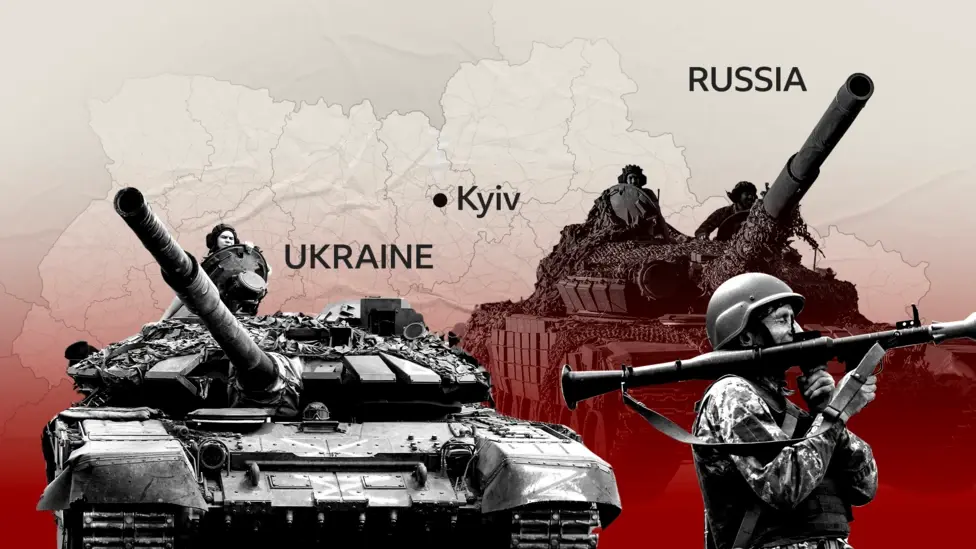What is Nato and what do Article 4 and 5 cover?
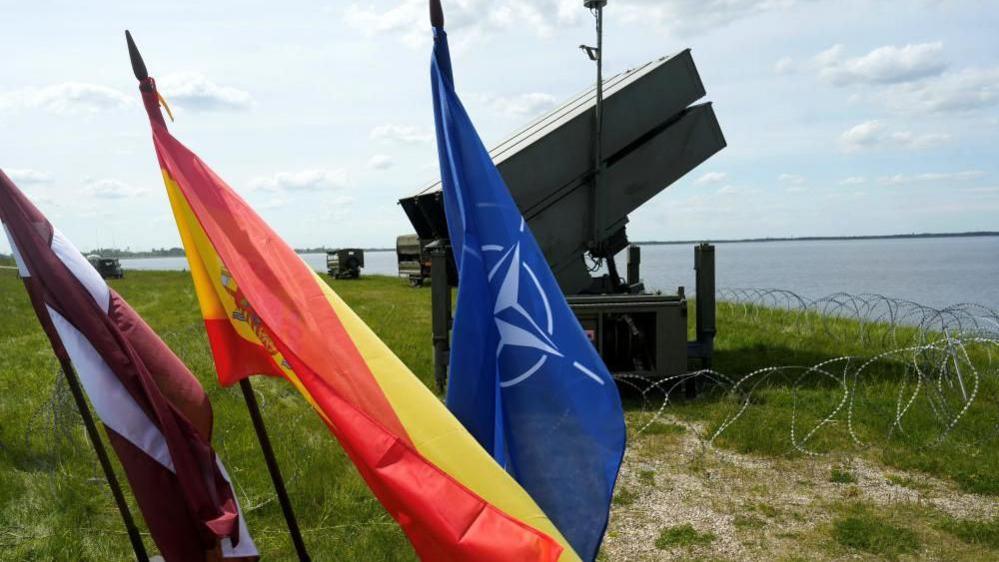
Nato exercises in Latvia in May 2025
- Published
Poland's Prime Minister Donald Tusk has said Polish and other Nato aircraft shot down a number of Russian drones which violated the country's airspace during strikes on neighbouring western Ukraine on the night of 9-10 September.
While Ukraine is not a Nato member, Poland is, and Tusk asked the alliance to investigate whether the territorial integrity, political independence or security of a member country had been threatened.
Then on 19 September, Estonia requested a consultation with other Nato members after three Russian MiG-31 fighter jets violated its airspace. Russia later denied any violation by the jets, saying they had flown over "neutral" Baltic waters.
At the Nato summit in June, the alliance's 32 members restated their "ironclad commitment to collective defence", known as Article 5, and agreed to boost defence spending after months of pressure from US President Donald Trump.
What is Nato?
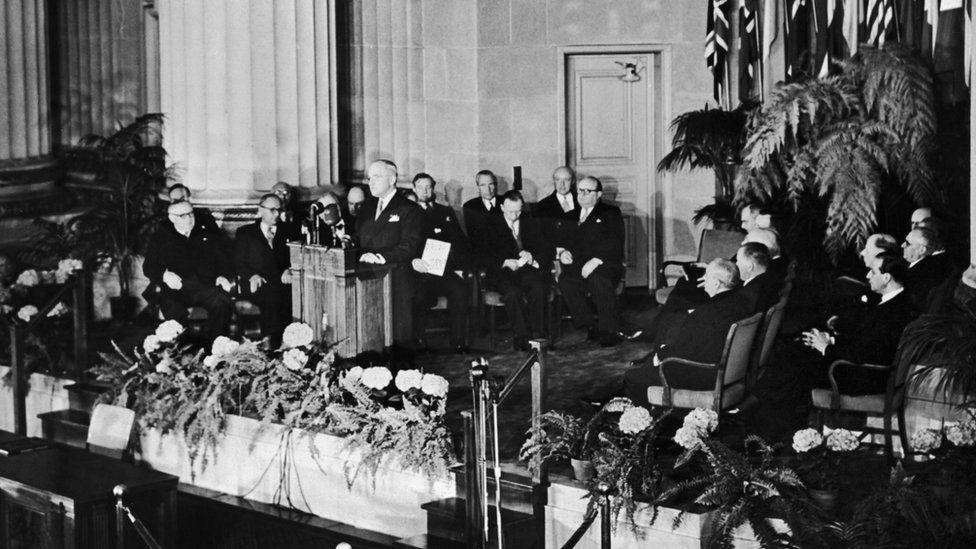
Nato was founded in Washington DC in 1949
Nato - the North Atlantic Treaty Organization - was formed in Washington DC in 1949 by 12 countries.
The founding members were Belgium, Canada, Denmark, France, Iceland, Italy, Luxembourg, the Netherlands, Norway, Portugal, the UK and the US.
Nato's primary purpose, external was to block expansion in Europe by the Soviet Union - a group of communist republics dominated by Russia which was dissolved in 1991.
The alliance does not have its own army, but member states can take collective military action in response to international crises.
For instance, Nato supported the UN by intervening in the war in the former Yugoslavia between 1992 and 2004.
It also co-ordinates military plans and carries out joint military exercises, external.
What are articles 5 and 4?
Article 5 is one of Nato's core principles, external. It says that an armed attack against one or more members will be considered an attack against all.
In response, each other member would take "such action as it deems necessary, including the use of armed force, to restore and maintain the security of the North Atlantic area".
The guarantee does not cover bases in foreign countries or territories outside the alliance area - which is why it did not apply during the Vietnam War or the Falkland Islands conflict.
Trump had previously questioned Nato's mutual guarantee, but speaking after the June summit said: "I stand with [Article Five], that's why I'm here."
Under Article 4 member countries can bring any issue of concern - especially related to security - to the North Atlantic Council, external, Nato's main political decision-making body.
Since Nato's creation in 1949, Article 4 has been invoked seven times.
Which countries are members?
Nato has 32 members across Europe and North America - the original 12 founders plus 20 countries which have joined since 1949.
After the Soviet Union's collapse, many Eastern European countries became members, including Albania, Bulgaria, the Czech Republic, Estonia, Hungary, Latvia, Lithuania, Poland, Romania and Slovakia.
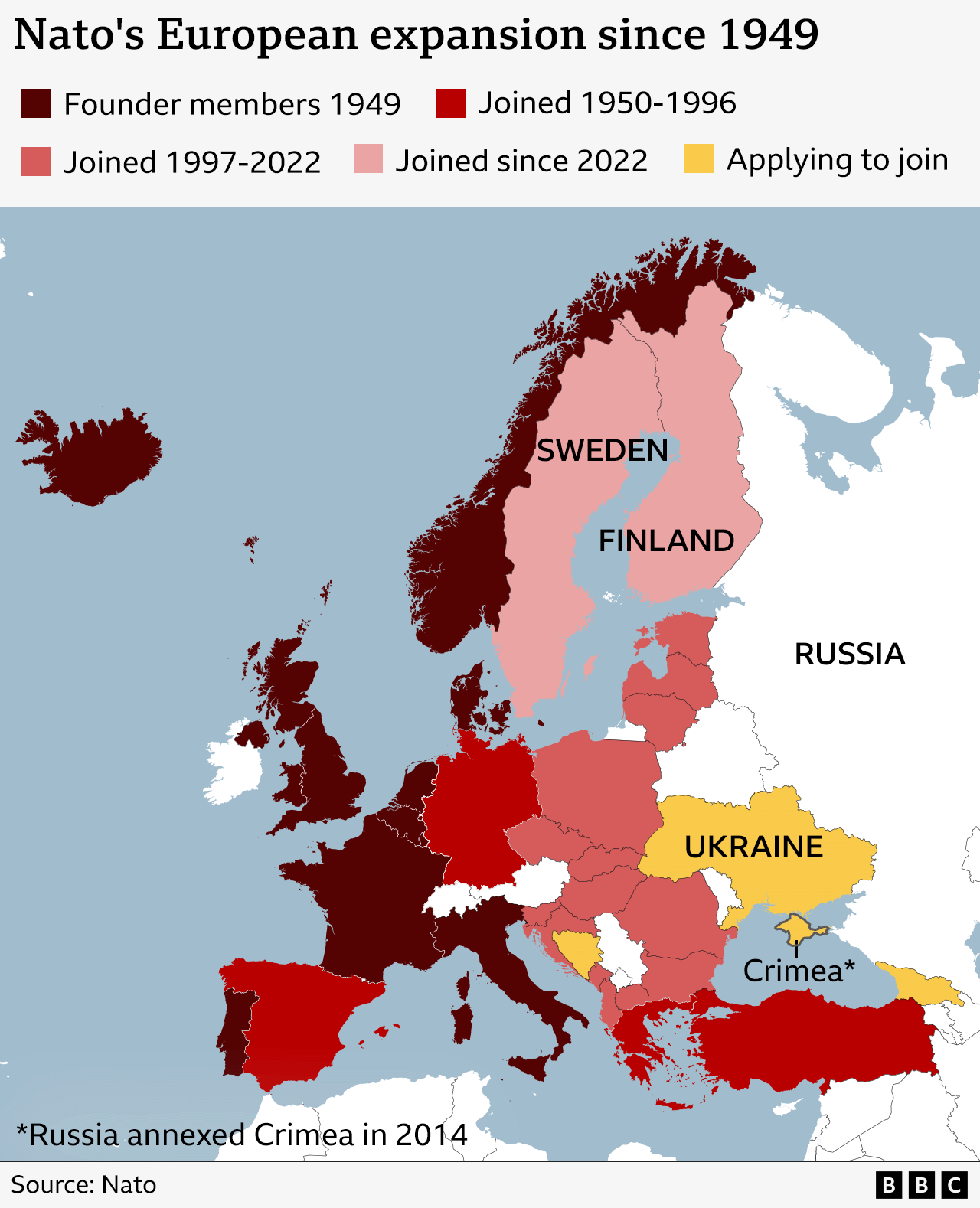
Finland - which has a 1,340km (832-mile) land border with Russia - joined in April 2023. Sweden became a member in March 2024.
Having been neutral for decades, both applied to Nato in May 2022, shortly after Russia invaded Ukraine.
Ukraine, Bosnia and Herzegovina, and Georgia are not members but have asked to join.
How much do members spend on defence?
Nato members are currently expected to spend 2% of their national income - or GDP - on defence although this is not a legally binding commitment.
The US and countries which are geographically close to Russia - such as Poland and the Baltic states - have traditionally spent the most.
In 2024, the US spent $935bn (£686bn), which was 3.2% of its GDP and nearly double the defence expenditure of the rest of Nato put together.
The latest estimates, external show nine members failed to meet the 2% target in 2024, with Spain spending the least - just 1.24% of GDP.
The 5% target agreed at the June summit commits 3.5% of each member state's GDP for core defence expenditure by 2035, plus up to 1.5% on wider security infrastructure.
Spain had objected to the increased target before the summit. The Belgian and Slovakian governments also expressed concerns but ultimately accepted the increase.
Ahead of the meeting in June, the UK government said it would spend 2.6% on core defence and 1.5% on wider security measures by 2027. Core defence spending is not expected to hit 3.5% until the 2035 deadline.
It has not confirmed how it will fund the additional spending.
Why is Ukraine not a member?
Ukraine's prospects for joining the alliance have been clouded by its ongoing war with Russia.
Russia has consistently opposed the idea of Ukraine becoming a member, fearing it would bring Nato forces too close to its borders.
In 2008, the alliance said that Ukraine could eventually join, external, and after Russia's 2022 invasion, Ukrainian President Volodymyr Zelensky asked for this process to be fast-tracked.
The Nato chief at the time, Jens Stoltenberg, said Ukraine could join "in the long term" but not until after the war had ended.
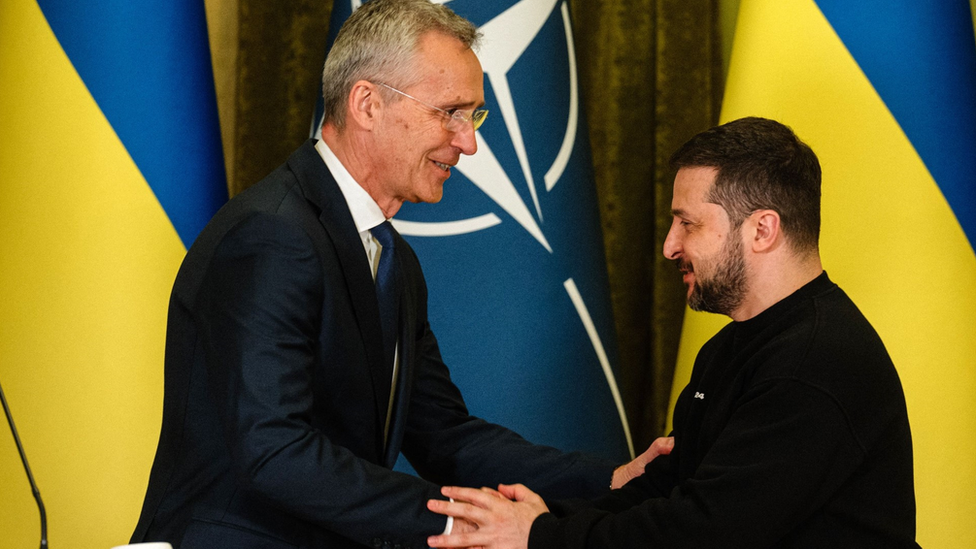
Former Nato chief Jens Stoltenberg told President Volodymyr Zelensky that Ukraine could still join in "the long term"
However, speaking at a defence summit in Brussels in February 2025, US Defence Secretary Pete Hegseth said "the US does not believe that Nato membership for Ukraine is a realistic outcome of a negotiated settlement".
Some Nato defence chiefs pushed back against the comments.
Zelensky later said he was prepared to "give up" his presidency if it meant Ukraine could join Nato.
"If to achieve peace you really need me to give up my post, I'm ready," he told reporters. "I can trade it for Nato membership."
The alliance previously described Russia's invasion of Ukraine as the "most significant and direct threat to allies' security, external".
It has not sent troops to Ukraine or established a no-fly zone over the country for fear of being pulled into a direct conflict with Russia, a nuclear superpower.
However, individual member states have supplied arms and equipment.
According to the German research organisation the Kiel Institute, external, the US spent 64.6bn euros (£55.79) on total military support between February 2022 and June 2025.
Over the same period, EU member states plus the UK, Norway, Switzerland, and Iceland have provided aid worth €79.8bn euros (£68.9bn).
It is not clear what form the "security guarantee" for Ukraine promised after the White House meeting will take, and how closely it might mirror the protections Nato members offer each other.
- Published13 August
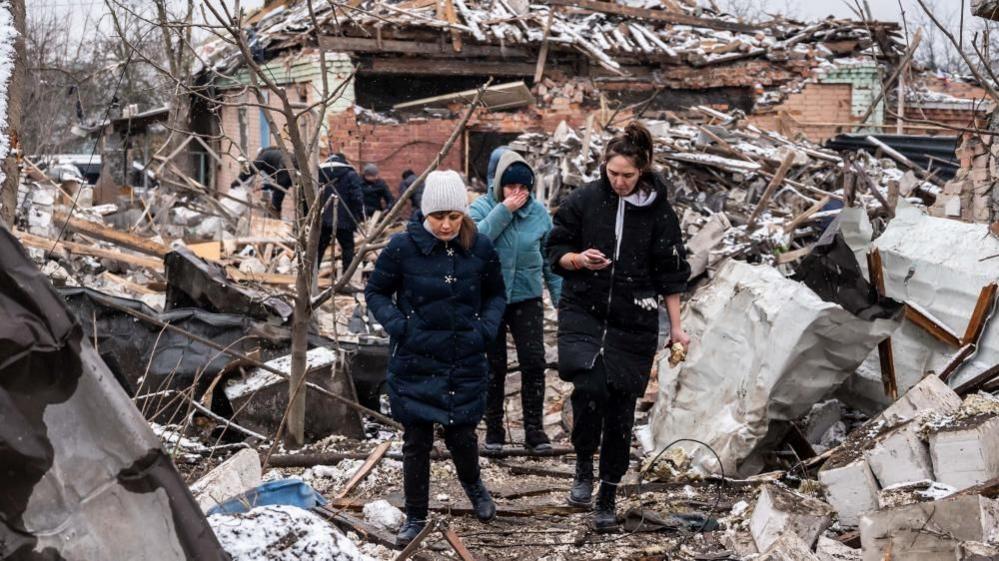
- Published17 February
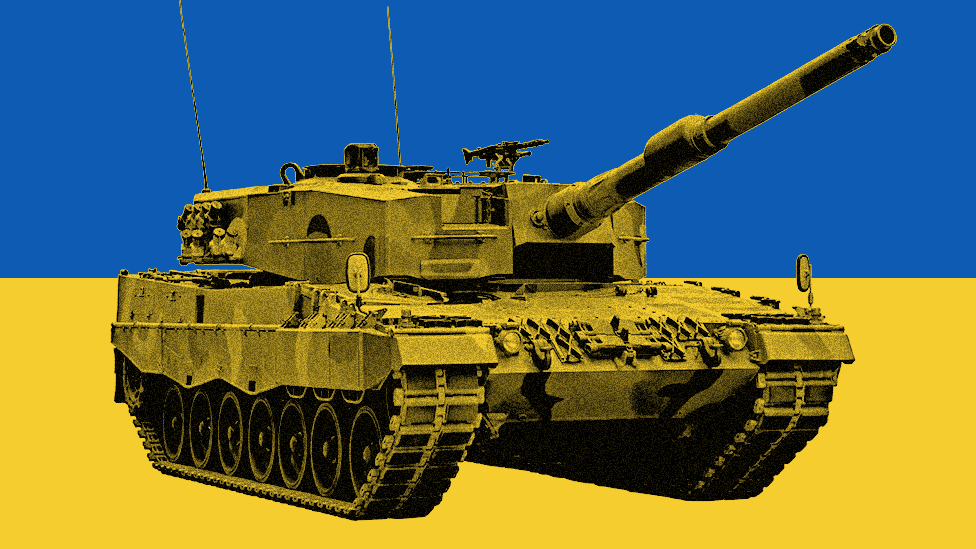
- Published9 hours ago
